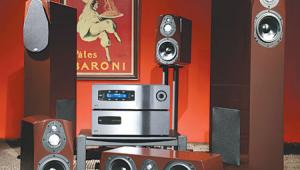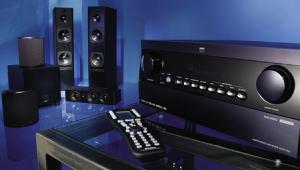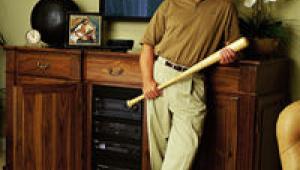Boston Acoustics AVR7120 A/V Receiver and VR3 Speaker System HT Labs Measures AVR7120 A/V Receiver

Five channels driven continuously into 8-ohm loads:
0.1% distortion at 99.4 watts
1% distortion at 118.7 watts
Analog frequency response in Pure mode:
–0.48 dB at 10 Hz; –0.15 dB at 20 Hz
–0.08 dB at 20 kHz; –0.45 dB at 50 kHz
Analog frequency response with signal processing:
–1.57 dB at 10 Hz; –0.49 dB at 20 Hz
–0.61 dB at 20 kHz; –58.91 dB at 50 kHz
This graph shows that the AVR7120's left channel, from CD input to speaker output with two channels driving 8-ohm loads, reaches 0.1% distortion at 108.3 watts and 1% distortion at 140.9 watts. Into 4 ohms, the amplifier reaches 0.1% distortion at 192.0 watts and 1% distortion at 230.2 watts.
Response from the multichannel input to the speaker output measures –1.49 dB at 10 Hz, –0.47 dB at 20 Hz, –0.66 dB at 20 kHz, and –53.52 dB at 50 kHz. THD+N from the amplifier was less than 0.010% at 1 kHz when driving 2.83 volts into an 8-ohm load. Crosstalk at 1 kHz driving 2.83 volts into an 8-ohm load was –75.57 dB left to right and –78.34 dB right to left. The signal-to-noise ratio with 2.83 volts driving an 8-ohm load from 10 Hz to 24 kHz with "A" weighting was –99.61 dBrA.
From the Dolby Digital input to the loudspeaker output, the left channel measures –0.36 dB at 20 Hz and –0.65 dB at 20 kHz. The center channel measures –0.30 dB at 20 Hz and –0.73 dB at 20 kHz, and the left surround channel measures –0.31 dB at 20 Hz and –0.67 dB at 20 kHz. From the Dolby Digital input to the line-level output, the LFE channel is –0.12 dB at 20 Hz when referenced to the level at 40 Hz and reaches the upper 3-dB down point at 97 Hz and the upper 6-dB down point at 113 Hz.—MJP






















































